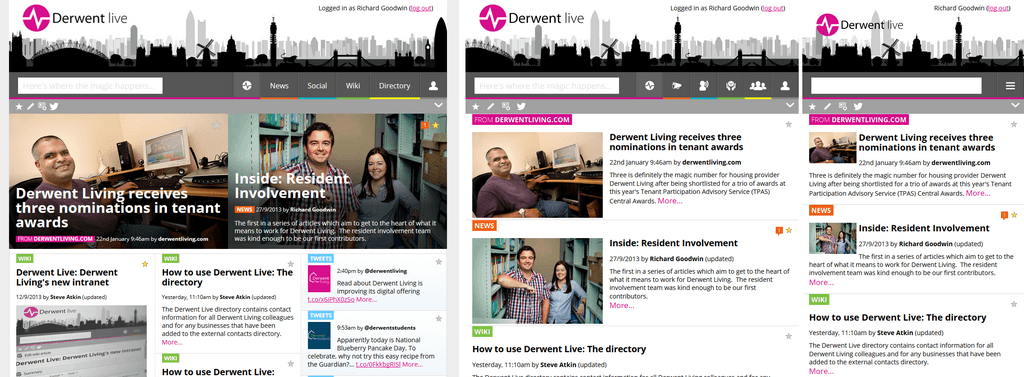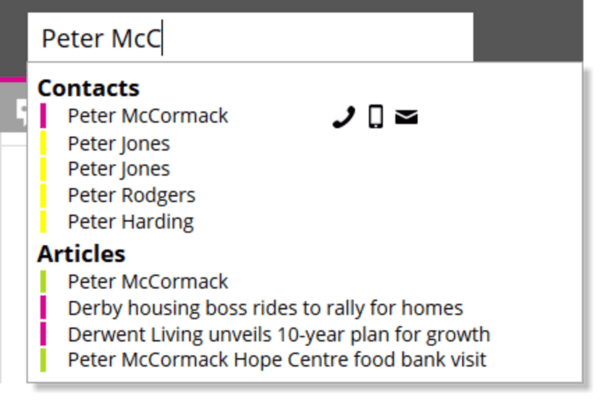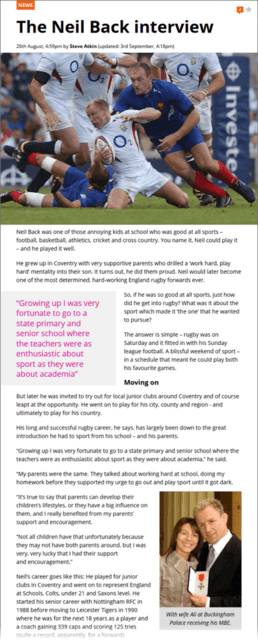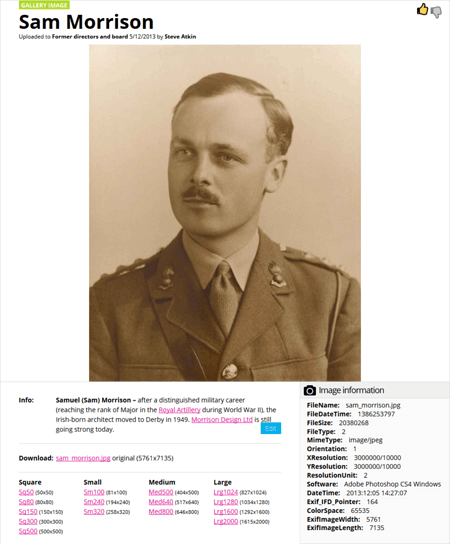Derwent Live
Intranet of things.
 Richard Goodwin
Richard Goodwin
When I joined Derwent Living in 2010, I actually joined on the same day a new intranet launched. It was designed to replace an aging in-house site which had been limping along for years, on a codebase that had likely seen in the new Millennium.
Although it was hailed as a solution to all our internal communication woes, the new one turned out to be about as featureless as the last one and people quickly turned their backs on it. It was also very broken. So much so that it took 20 minutes to post a news item. Search just returned every page in the same order no matter what you were trying to search for. Uploading images over 1MB – forget it.
So after two years it’s time was up, and the business turned to my team to look for a new solution. We looked at Microsoft Sharepoint, but found it difficult to set up using our Active Directory configuration, and didn't like how it split information and social aspects into two completely separate sites. After looking at the market and the many off the shelf packages available, we decided to save the money and the annual support and maintenance costs and produce our own from scratch, looking elsewhere for inspiration.
Great artists...
People were familiar with social media sites away from work, so sites such as Twitter and Facebook were our touchstones, along with Google for search, and Flickr for photo galleries. For articles we looked at sites we enjoyed reading - The Verge, BBC News etc.
This was more how things felt rather than ripping off specific features. For example, we liked the way articles on some sites were presented with ample borders down each side and yet large images used the full width, ignoring the borders. This made reading easier but the photos look bigger and more stylish, even if the page width was actually quite thin.

Having written CMS-style sites before, Rich my developer was pretty confident that everything was going to be fine - apart from search. Not only had he not written anything but the most basic search before, but it was the number one feature that just had to be right to get people to forget the problems the old intranet. Left until last - as it would have to be able to search every feature, including the staff directory and user's comment – I kept asking, "how long do you think search will take to write?" And Rich’s answer was always that he didn't know - it could be two hours, it could be two weeks.
I would also tease, "That's not the attitude Google would take," to which he’d reply "Yeah, but they have more than one guy writing everything".
In the end both estimates were right: using a modified stemming algorithm Rich got basic search (storage and retrieval) working in just a couple of hours, but tweaking the weighting given to words in various different situations took a couple of weeks to get just right.

The search page was also smart enough to know if you were searching for a person instead of an article, and if so present the directory results first.
As we’d hooked it in to the information on pictures in galleries, it could even show a bunch of images (as well as the usual staff head shots on their results). You could even click on the 'phone numbers to dial from the desk 'phone, as well as the usual email links. And in the end, very few people even saw the search page as the search-as-you-type drop-down feature implemented was good enough for almost everyone, with past searches and clicked results displayed before you typed, and from three characters onwards the same "guess you're looking for people, click to dial" smarts in a compressed format.
A picture is worth a thousand lines of code
We were also pleased with the imaging system, which Rich wrote before even planning the CMS. Instead of the WordPress way of creating copies of image at various sizes at upload, this allowed various sizes (and shapes) to be created on demand, and cached for future use. This meant less wasted space, but also allowed more sizes and use cases in the future (retina images for mobile; converting SVGs for PNG for older browsers; Flickr-style downloads at multiple sizes and shapes; heavily compressed employee photos for VCards). The retina images used a clever compression trick that could actually make them smaller than saving a "proper" image from Photoshop. It was a sort of CDN-style system, but without the distribution network. So... just content then.

Time flies
The whole project took about six-eight months from start to finish, including a full staff consultation programme which I led with former colleague Mickey ‘two phones’ Futers.
The site would go on to see regular seasonal updates, with emojis, LinkedIn style endorsements, iPlayer like channels and a full notification alert system added over the next few years.
Derwent Live was ridiculously ambitious for its time and is still way ahead of many corporate intranets I’ve used since nearly a decade later. Derwent Live did the one thing many intranets struggle to do, becoming a true business and social tool for staff rather than a broadcast transmitter. It was also self-sustaining, with a democratised system for content popularity and user-generated content.
It also paved the way for future projects like websites and portals, which would go on to win national awards and accolades. Maybe one day we’ll get to make version two – here’s hoping.
Some content on this page has been 'borrowed' from Rich's House of Mabel blog.